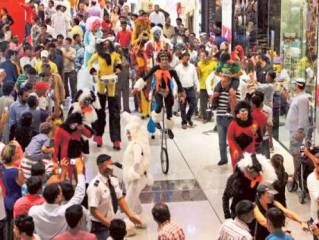Retailing has undergone a transformation with the balance of power shifting from brands to retailers, and eventually to consumers. In this new age, the “connected consumer” can become a shopper anytime, anywhere.
Kantar’s Global Monitor study indicates that approximately 50-60 per cent across all age groups value experiences over material things. Therefore, delivering optimal shopper experiences is paramount to retailers and brands surviving in this fast-paced environment. So, how do brands and retailers succeed in this new age of shopper first?
Modern shoppers have a plethora of options to choose from, all vying for their time and attention. To keep pace with the competition, retailers/brands need to create experiences that engage and delight shoppers, by going beyond the basics.
One such example is gamification, which is being employed by brands like Coca-Cola by using interactive games as a method to drive engagement and incentivise shoppers through rewards. Similarly, Augmented Reality features are being integrated in retail store environments and even digitally, to induce trials by virtually recreating real-life scenarios. For instance, Home Centre’s mobile AR feature allows shoppers to visualise furniture in their chosen space.
Retailers/brands can also create multi-sensory in-store experiences by appealing to two or more physical senses. The Starbucks Reserve Roastery in Shanghai lets customers taste different blends and use AR to learn about its roasting process, elevating customers’ sense of taste and sight under one roof. Lastly, forming meaningful connections through brand purpose will enable retailers/brands to create lasting relationships.
P & G’s thought-provoking campaigns like “Thank You Mom” and “Share the Load” for Ariel are examples of this.
Beyond engagement, winning companies are using technology to give consumers more choice and make better decisions. By integrating online into the physical store environment, retailers can give more products to choose from. A noteworthy example of this is Walmart’s “endless aisle” concept in the US, where shoppers can choose from the entire range of products in the toy section through a touchscreen monitor and order the product online if their chosen toy is unavailable in-store.
Furthermore, the technology allows consumers to find out more about the products on offer to make more informed decisions
Given the increasing time pressure on consumers, brands and retailers need to consider efficiency around speed and spend. For instance, Amazon Go stores aim to reduce the amount of time spent by shoppers in-store, by eliminating checkouts altogether. Carrefour has also introduced a similar “scan-and-go” feature in its hypermarket at City Centre Mirdif.
Locally, Etisalat’s Smart Malls at select metro stations offer commuters on-the-go quick fix to their daily shopping needs, by saving them the trip they’d normally have to make to a grocery store. Various apps exist to compare prices and offers that allow the shopper to compare prices and offers across retailers
Besides being efficient, shoppers increasingly wish to be in control over their product choices and purchase decisions. Mass-manufacturing and marketing is no longer a solution, as shoppers continue to seek increased personalisation and curated offers based on their needs.
An impressive example of this is US based online retailer Stitch Fix, which allows shoppers to fill in their personal style preferences and receive products based on these. Shoppers can then choose to either buy the products shipped to them or return them.
While retailing at present is consumer-driven, rapid technological advancements are paving the way for a tech-driven future. Artificial Intelligence, which was once a myth, is now a reality that’s propelling us toward a future run by algorithms. According to Gartner, by 2020, 85 per cent of consumer interactions in retail will be managed by AI which will take over the routine decisions that consumers currently make.
Voice commerce is another technology being leveraged by global giants like Amazon and Apple, who are pushing out products/features like Alexa and Siri to revolutionise the way consumers interact with brands and retailers. While the pace of adoption may differ by market, the winners will be those who fully understand the concept of retail experience and can integrate this into all aspects of their proposition.













